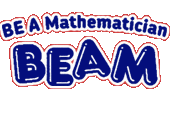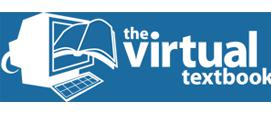Measurement
This collection of resources supports the teaching of Measurement in primary mathematics. These activities are linked to the year groups containing the corresponding content in the National Curriculum.
Here are some favourite activities selected by the NRICH team.
-
Bottles 1 (Y1) In this activity focusing on capacity, you will need a collection of different jars and bottles.
-
Order, Order (Y2) Can you place these quantities in order from smallest to largest?
-
Oh! Harry! (Y3) A group of children are using measuring cylinders but they lose the labels. Can you help relabel them?
-
5 on the Clock (Y3) On a digital clock showing 24 hour time, over a whole day, how many times does a 5 appear? Is it the same number for a 12 hour clock over a whole day?
-
Torn Shapes (Y4) These rectangles have been torn. How many squares did each one have inside it before it was ripped?
-
Numerically Equal (Y5) Can you draw a square in which the perimeter is numerically equal to the area?
-
Next Size Up (Y6) The challenge for you is to make a string of six (or more!) graded cubes.
These are just a few of the activities on Measurement that you can find on the NRICH curriculum pages.
The activities below, taken from the STEM Learning website, complement the NRICH activities above.
- ALL
- Video
- Interactive resource
- Activity sheet
Video
Measures
This video highlights two interesting ideas for teaching measure. In the first idea, a teacher provides a context for a problem involving measuring liquids - that of making a magic potion.
Making muffins for a competition provides a context in which children use scales to measure the ingredients as accurately as they can.
The interactive measuring cylinder and scales used in the clip can be found here.
Interactive resource
Interactive Teaching Programs 5
Use the Tell the time ITP to show the time on analogue and digital clocks separately or together. The clocks can be moved around the screen and their sizes altered and the times can be adjusted in different intervals of time. A great introduction to telling the time or useful for a teacher led session with a small group of children.
The resource also contains an ITP Ruler which can be used to measure lines and the sides of shapes. There is a choice of rulers and five screens to use to demonstrate measuring length.
The Thermometer tool allows the scale, range and the interval markers on a thermometer to be changed and a slider control can be dragged up and down the length of the thermometer to set the height of the column. A second marker indicates the last reading so that comparisons can be made.
Activity sheet
Measurement
Pack one contains a large selection of simple activities ideal for use as starter or practical activities. Snails’ Trails demands that students measure accurately to the nearest millimetre, Time Bingo is a game designed to allow students to practise reading time, 24 Hour Bingo is the same activity but using the twenty four hour clock and Watching Weights is a matching exercise.
Pack two contains more challenging activities. About How Much requires students to estimate weights, whilst Good Guesswork asks students to estimate lengths. Thermometer Readings provides students with practice of reading temperatures from a thermometer and Room to Move asks students to investigate how much room an average person takes up.
Volume and Capacity: an Activity Pack
21 cards containing practical activities for children to explore volume and capacity. These tasks allow children to develop their mathematical skill by actively estimating, measuring and comparing capacity and volume. They really get children thinking about measure.
Activities include:
• free play with a variety of containers in contrasting shapes and sizes
• comparing the capacities of containers by pouring the contents of one into another
• measuring and comparing the capacities of containers by filling them with any smaller non-standard containers
• measuring and comparing the capacities of cuboid boxes by filling them with small cubes
• estimating and finding the capacities of all sorts of containers
• using displacement of water as a means of measuring volume
Measures
This resource contains an interactive spreadsheet designed to illustrate teaching points and provide practice in measure. The notes for using the activities are provided on a separate tab within the spreadsheet and each page of the spreadsheet contains a different activity, they are:
Polygon Perimeters: calculate the perimeter of a regular polygon from 3 to 40 sides given the length of one side.
Recipes: work out the amounts of ingredients in a recipe needed for more people by scaling up or down.
Mixed lengths: convert between different units of length.
Mixed capacities: convert between different units of capacity.
Mixed masses: convert between different units of mass.
Subtracting mixed units: compare two ways of subtracting given mixed units of measure.
Area and Perimeter Resource Bank
This resource bank consists of 19 activities exploring and investigating different area and perimeter. The activities include:
• Investigations using a tangram
• Measuring the areas of composite shapes made from rectangles and triangles
• Investigating the link between the dimensions of a rectangle and the size of its area
• Investigating the area of a triangles made on a isometric paper
• Calculating the perimeter of snowflakes made from overlapping triangles
• Using squares to find circles
• Finding the area of squares in squares and triangles in triangles
• Finding the area of kites
• Finding the area of rectangles on a geoboard
• Using a rule to find the area of a triangle
• Finding areas of irregular shapes
• Finding maximum and minimum areas for shapes with a fixed perimeter size
• Using area to generate number patterns








